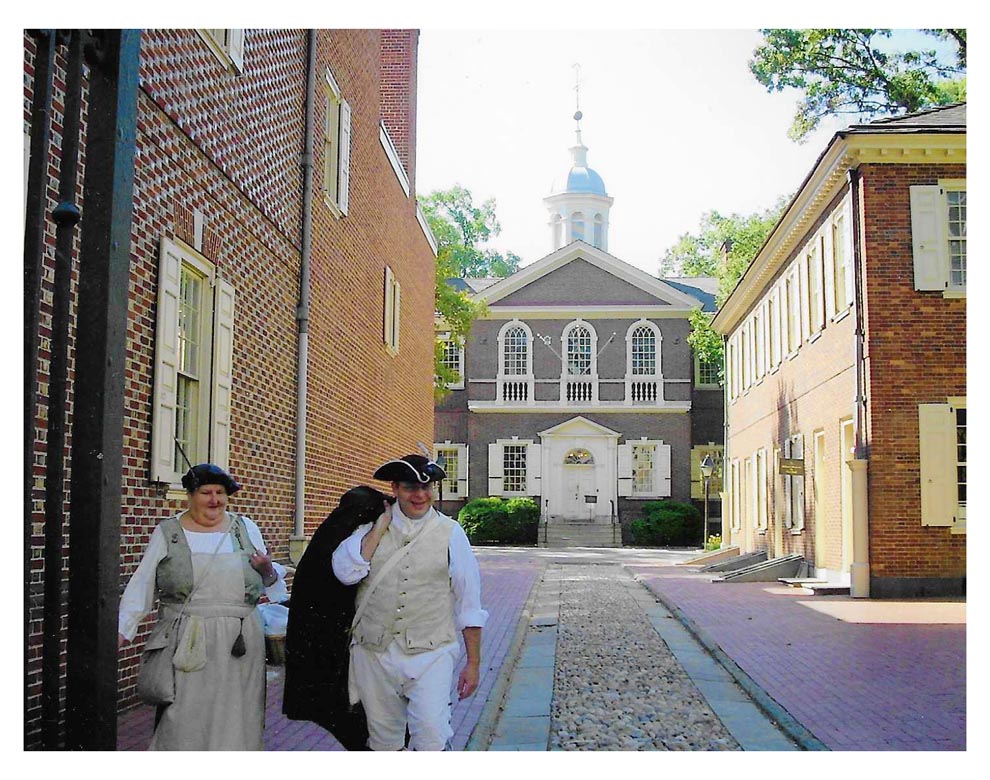

First of two parts
The history of the city of Philadelphia is one of import and significance. Truly a remarkable repository of our Nation’s past. Situated at the confluence of the Delaware and Schuylkill Rivers, it has a population today of approximately 1.6 million residents.
In 1646 the first church was built by Swedes and consecrated on Tinicum Island. March 4,1681 the Charter of Pennsylvania was granted by Charles II. William Penn landed October 24, 1682, and signed Penn’s Treaty with the Indians in November. A club was formed in 1715 called the Bachelors’ Club as the first country club adjacent to the city. The Club became notorious by its festivities.
Benjamin Franklin arrived in 1723 and applied to Andrew Bradford, the printer, for employment. His life had merit and accomplishments. In 1775 the Continental Congress elected Franklin the first Postmaster General of the United Colonies. He died April 17, 1790. His resting place is the Christ Church cemetery at the corner of Fifth and Arch Street. A copy of his epitaph is in the Library of Congress dated 1784.
Philadelphia opened the first zoo, the first American hospital, and the first medical school. In fact, today one of every six medical students takes training in Philadelphia. The first American daily newspaper, The Philadelphia Packet and DailyAdvertiser began in 1784. The Walnut Street Theatre is the oldest continually running theater in the English-speaking world. Philadelphia was the home of the first general purpose computer in 1946 and weighed 27 tons.
Here’s a surprise: Neither Thomas Jefferson nor John Adams signed the Constitution because they were out of town.
Independence Hall was designated a WorldHeritage Sitein 1979 and contains Independence Hall where the Declaration of Independence and U.S. Constitution were created. In 2003 the new Liberty Bell Center was opened. Nearby, Elfreth’s Alley, dating from 1702, has 33 houses that make up the oldest continuously inhabited street in America. Included in the complex are Carpenters’ Hall where the First Continental Congress met.
Most of the homes were two-and-three story red-brick structures of colonial design both outside and inside. The Philadelphia Historical Commission has certified 7,500 buildings and structures, ranging from 17th Century houses to a 1950 bridge.
The ethnic neighborhoods just below Penn Square include the German, Italian, Irish and African American sections. Visitors from all around the world visit the city. According to its 2021 Annual Report, 46 million visited the area. Listed is the fact that $6 billion was lost revenue from the tourism industry because of COVID.
It was to this august city that I flew in May to visit the libraries and book shops, to walk the Benjamin Franklin Parkway up to the Museum of Art and the “Rocky steps.” To all the historic sights and to savor downtown restaurants and shops. The Redding Terminal Market is a cornucopia of flowers, fruits, cheese, meats and places to actually sit on a stool and enjoy the meal.
Alas, the Philadelphia ballet was opening the day after I left! Symphony Hall was directly across the street from the hotel so I could have walked across the street and be delighted. No driving. No parking!
You will read more about this adventure next week!

